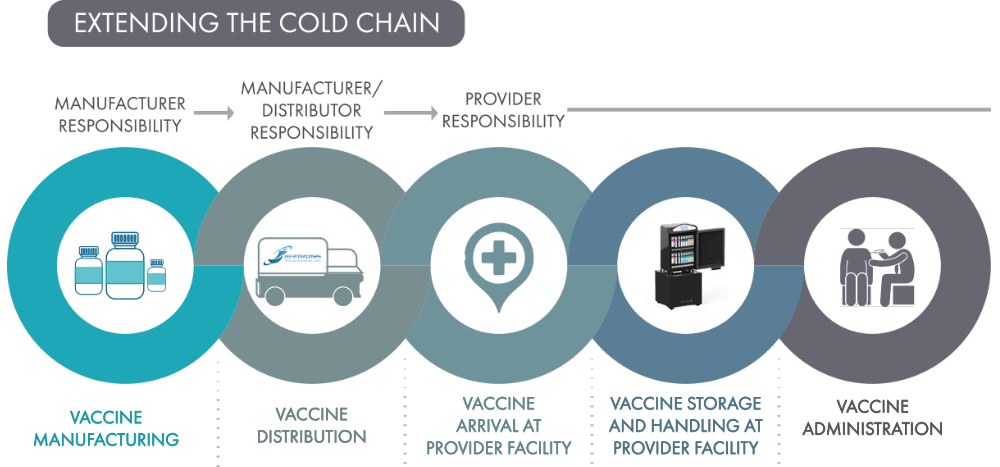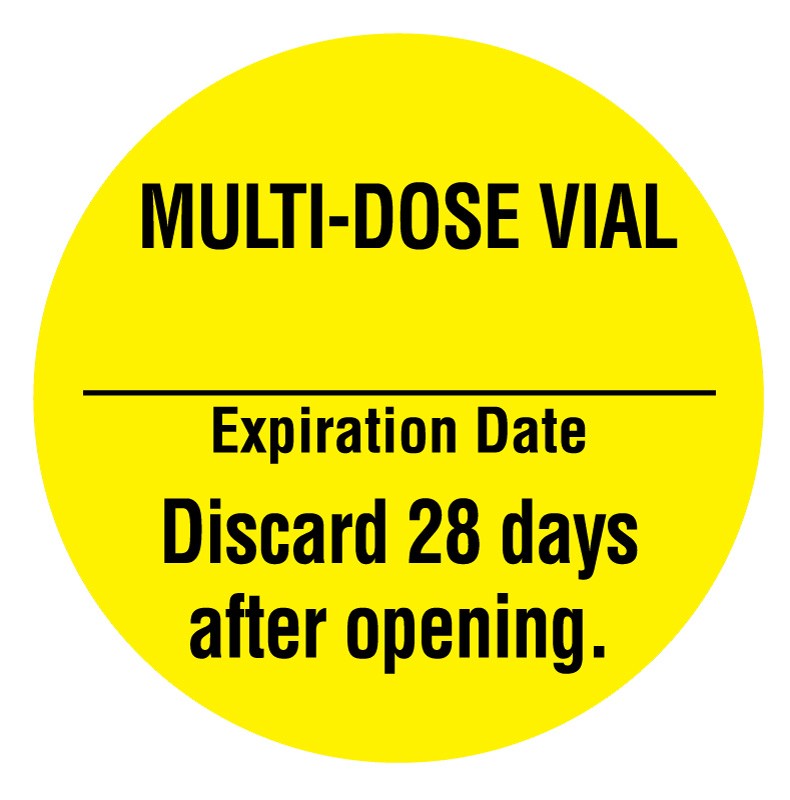The Impact Of Improper Vaccine Storage
In fact, improper storage creates two significant problems:
- Impotent vaccines
- Financial loss

Storing vaccines outside their required temperature range decreases the potency which, in turn, decreases the vaccine’s protection. So, in order to retain the intended efficacy, it requires administering another dose.
Obviously, very few patients want to spend additional time with a healthcare professional or receive two shots when one is intended to be sufficient. Further, for the healthcare organization, the wasted vaccines are an avoidable expense.
Vaccine Storage And Temperature Monitoring
Inadequate temperatures are the single biggest reason that vaccines fail. But, the reason isn’t because of a miscalculation. Instead, inadvertent actions are at fault including:
- Unplugging a refrigeration unit
- Turning power off to a refrigeration unit through a circuit breaker or fuse
How To Use Labels To Meet Vaccine Storage Guidelines
Ensuring appropriate temperatures, in part, requires communicating a simple message to staff:
Don’t kill power to refrigeration units!
And when you aren’t there to shout it out in person, labeling electrical outlets and electrical panels is an effective alternative. It alerts the staff to maintain power to the refrigeration units.
Temperature Excursions
Unfortunately, a malfunctioning refrigeration unit or human error can result in vaccine storage outside its required temperature range. When a reading occurs outside ranges recommended in the manufacturers’ package inserts, it’s essential to remove the vaccine from inventory and label it with a Do Not Use label. Then, work with the vaccine supplier for proper disposal.
Expiration Dates
In addition to a defined expiration date, some vaccines have a beyond-use date (BUD). This is calculated based on two data points:
- The date the vial is first entered
- Storage information in the package insert
The BUD replaces the manufacturer’s expiration date. The vaccine should not be used after the BUD.
For example, the CDC details vaccines that require a beyond-use date:
- Reconstituted vaccines have a limited period for use once the vaccine is mixed with a diluent. This period, or BUD, is listed in the package insert.
- Multidose vials might have a specified period for use once they have been entered with a needle. To illustrate, the package insert may state that the vaccine must be discarded 28 days after it is entered. If the vial is entered on 11/01/2019, the BUD is 11/29/2019.
You should note changes on a label along with the initials of the person making the calculation.
Shelving
Using shelving effectively is another way to ensure and reduce administrative errors and waste. Here are guidelines the CDC recommends:
- Label shelves with vaccine names
- Store vaccines and diluents with similar packaging or names, or with pediatric and adult formulations, on different shelves - using a look-alike sound-alike label can also help guard against mix-ups
- Label shelves and containers to clearly identify where each type of vaccine and diluent is stored
When labeling shelves in a refrigeration unit, make sure the label contains a cold temperature adhesive. If not, it’s likely the adhesive will fail and cause the label to fall off the shelf. In fact, stock vaccine labels are often designed to include the proper adhesive. For example, UAL vaccine labels use cold temperature adhesives designed to work in refrigeration units. But, if you use a custom label, it’s essential to communicate the temperature guidelines when ordering the product.
Use Labels To Meet Vaccine Storage Guidelines
Storing vaccines properly improves the accuracy of administration. Plus it helps prevent temperature excursions and waste due to expired vaccines. An effective labeling process is an effective method of maintaining patient satisfaction and avoiding unnecessary cost outlays.
United Ad Label
United Ad Label supplies stock and custom labels that help you meet vaccine storage guidelines. Contact us to learn more.

